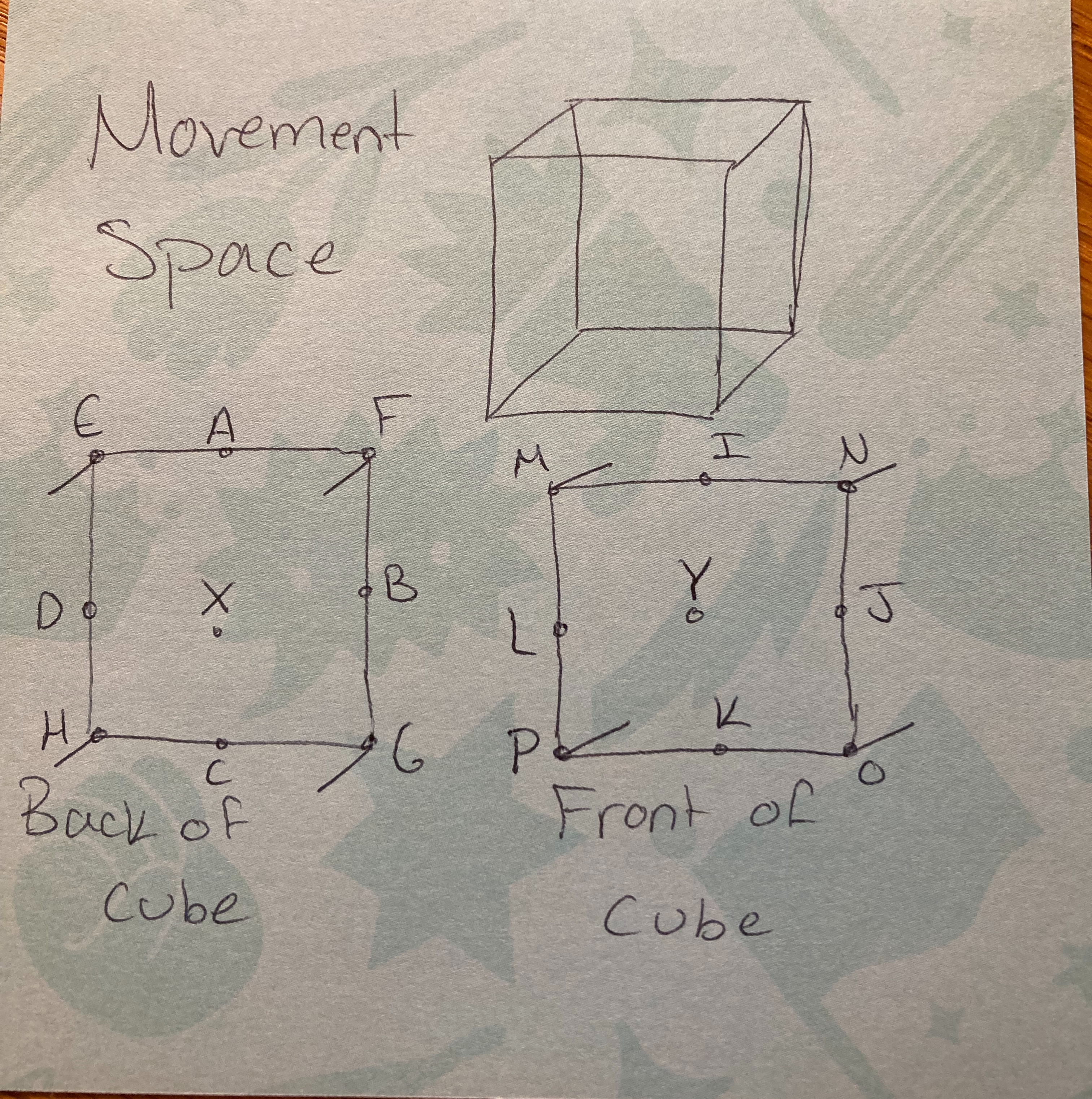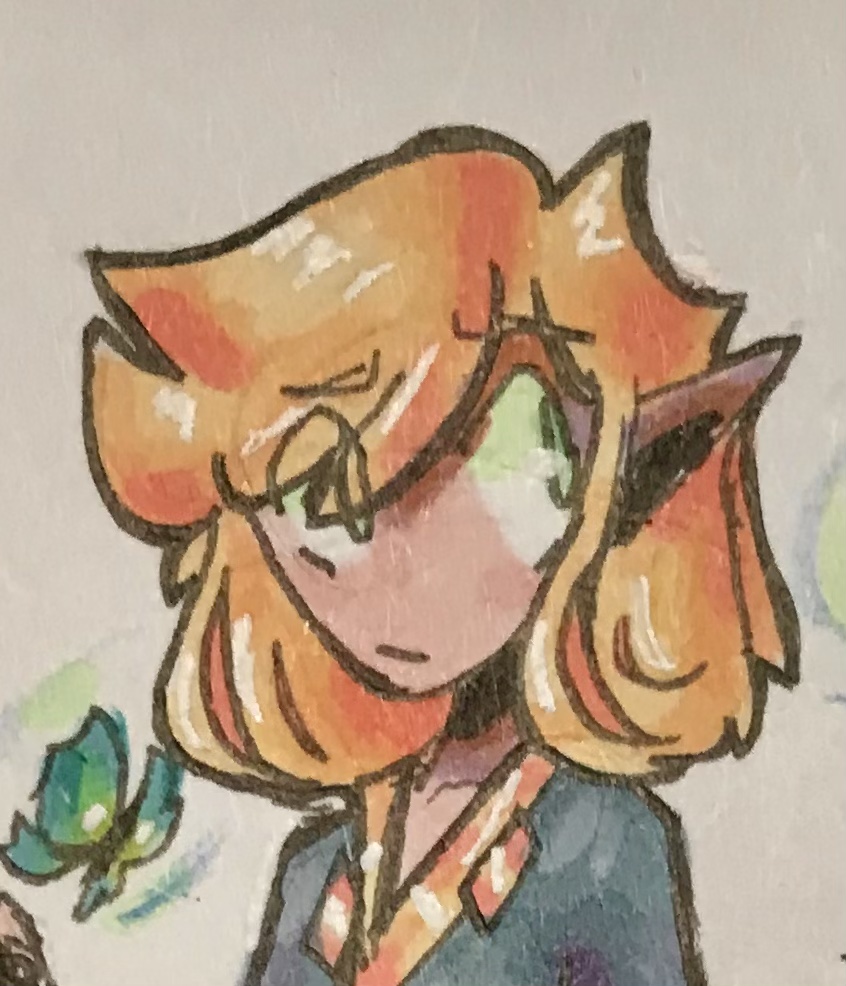Formerly called Melzi Sign, the Voiceless Language is a sign language used primarily by the Voiceless community in Melzi. Though the term Voiceless came from the use of sign, the widespread use of sign occurred because many of the first people among this group of second-class citizenry were deaf and hard of hearing.
Those who are born Voiceless usually grow up signing, though some parents purposely ensure their children hear the Citizen language, so they will develop bilingually. In cities, where Citizens and Voiceless live in separate districts, this can be somewhat controversial. Some parents do not want their children to learn the Citizen language because being made a Citizen will also mean adoption by a Citizen family. In rural areas, where this separation is less common, however, it is not only common for Voiceless children to learn the Citizen language, but for Citizen children to also grow up signing. As a result, the rural dialect of the language is closer to the original Melzi Sign than the city dialect, which has simplified due to the large number of non-native speakers learning it each year.
Do you think they really are voiceless?
Oh no, I'm sure it's metaphorical.— Conversation between sophomores at Selwyn High School
Coming Soon: A flyer for language classes
In cities, most people who are born Citizens do not bother to learn the Voiceless language. In fact, many Citizens are not aware that the Voiceless have a language, mistaking the signs as mere gestures. Some even take the term Voiceless literally, believing members of the group have somehow had their ability to speak removed. Citizens who fail their sophomore
exams are made Voiceless, and those who do not know the language often attend classes at places like the
Voiceless Language Lab in the city of
Selwyn. Though a person can function without learning the language, it is difficult because sign is the primary modality of communication in Voiceless districts and they are likely to interact with people who do not use spoken language. Fruthermore, some city officials will insist on commuicating only with Voiceless language even if they know a given person speaks the Citizen language. In rural areas where bilinguality is common, both Citizens and Voiceless will regularly codeswitch between the two languages.
Doctors and government officials who work routinely with the Voiceless, such as those who assign Voiceless to their jobs, are encouraged to learn the language if they don't already know it. Those who live in cities often attend classes separate from those held for teenagers who have just been made Voiceless. Others opt for hiring translators, usually Citizens who were born Voiceless.
The Voiceless language does not have a written form. Voiceless children who do not pass the kinergarten entrance test are sent to a Voiceless school where they learn the written form of the Citizen language. The curriculum for these classes is notably absent of any connection between the written form and the spoken form of the Citizen language, making the process much slower than it usually is for Citizen children, who are taught to encode and decode words phonetically. As a result, many Voiceless do not read well, and this is usually upheld as further evidence that they are dumb.
Despite the government policies which have done much to widen gaps between social groups, increase language barriers, and generally sow fear of the Voiceless among the Citizens, most who understand the Voiceless Language are aware of its rich linguistic complexity. The Voiceless themselves, and their allies, do not consider themselves as not having a voice, and often continue to refer to the language by its original name, Melzi Sign.
Transcription
This article uses a variation of David J. Peterson's
SLIPA system to transcribe signs. These are
written transcriptions, rather than the actual signs, which would be difficult to provide a dictionary of here. Signs are typically described as being made up of a place, movement, and handshape. Below, I will describe those used in Melzi Sign. You can learn more about the full transcription system by using the link above.
This is a Summer Camp article, and therefore, the transcription system is not complete. In the future this will be moved and/or elaborated upon in a separate transcription article with improved pictures/videos, but this will have to wait until later.
Place
Note: the words "dominant" and "non-dominant" here refer to the side of the signer's dominant and non-dominant hand.
- h = the forehead
- ey = the dominant eye
- e_y = the non-dominant eye
- ch = the dominant cheek
- c_h = the non-dominant cheek
- c = the chin
- sh = the (non-dominant) shoulder
- lbw = the (non-dominant) elbow
- wrs = the (non-dominant) wrist
- m = the chest
Unless otherwise notated, signs at places 1-9 always touch the place, and signs at the chest, [m], are signed in front of the chest. This also serves as the language's "neutral space."
Secondary Articulation
Notations marking secondary movements always begin with an exclamation point. These are followed by a single letter denoting the type of articulation:
- t = touch (when followed by a number, this indicates the number of times a place is tapped.)
- f = facing toward the Place
- g = facing away from the Place
a two letter code in parentheses then denotes which part of the hand is used for this articulation:
- (th) = thumb
- (in) = index finger
- (im) = index and middle finger
- (ft) = edge of fingers
- (sd) = side of hand
- (pm) = palm
Example:
The notation for the word "I" is:
m!f(ft)
This means the word "I" is signed with a flat hand curved inward, with all four-fingers pointing to the chest.
Movement
Movement is notated based on the following diagram of the movement chart:

by Molly Marjorie
Movement is notated with the letter m, followed by capital letters that indicate the start and end points of a movement. For reference, the signer is always standing at the back of the cube. Curves are indicates with a carrot (^) between letters for upward, outward, and non-dominant curves and an underscore (_) between letters for downward, inward, and dominant side curves. (Horizontal notation should not be construed as movement to the right and left, but between the dominant and non-dominant sides of the body. Though the movement space depicts the space of a right-handed signer, left-handed signers should reverse the direction notated.)
Examples:
mXA = a movement upward, close to the signer's body
mYI = a movement upward, further away from the body
mXY = a movement away from the body
mDB = a long movement from the non-dominant side to the dominant side
mX^B = an upward curve to the right
mX_Y = a downward curve moving away from the signer
mX_C = a movement down which also curves in toward the body
Secondary Articulation
Secondary articulations follow the indicated movement in parentheses, and are notated as follows:
- a = augmentative (the movement is bigger)
- d = diminutive (the movement is smaller)
Example:
The movement of the sign for "welcome" is notated as:
mX(d)Y^L
This means the sign moves down slightly, and then curves outward and to the non-dominant side
Handshape
Handshape is always notated between square brackets in between the notations for place and movement. If there is no place notated (the sign happens in the neutral space), then the handshape follows the notation for movement. A change in handshape is indicated with the (#) symbol written between handshapes. Handshape is notated as follows:
- 5 = the hand spread open, with fingers apart
- S = a closed fist
- B = an open palm with fingers pressed together, and thumb along the side
- D. = middle and index finger extended out (ring finger and pink curled inward, with thumb on top)
- G = index finger extended (all others curled into palm)
- L = the index finger and thumb are perpendicular. Other fingers curl into palm







Awesome article, I love that you actually went through to create an actual functioning sign, to represent on a video, and that you seem to sign it in a natural and fluent looking manner! :) Do you speak any real-world sign languages? I only know a tiny bit of Finnish Sign Language. The Voiceless community in your world sounds fascinating, but I'm not sure if I understood what it really means to be a Voiceless, and how you become one. It would be nice to have even more information on that. Small videos to show the signs in the grammar examples would be an awesome addition too. But getting all this done during the summer camp is already amazing! :)
Thank you so much! I know a wee bit of American Sign Language, which I sometimes use when teaching English, because it actually helps some of my students to learn new words when they are matching them with a sign, but I am nowhere near fluent. The video required a lot of practice. I will definitely be working on the article about the Voiceless soon. I realized they would have worked for one of the ethnicity articles, only after I had already responded. The short versions is that this country is a type of academic meritocracy, so you if you don't perform well on various standardized test, you lose your citizenship, and once you do, you're kind of shunned (though more so in urban areas, where it's easier to physically divide groups of people). A lot of the first people in this group were deaf or hard of hearing, and the government basically decided they didn't want to support their needs, so they usually didn't pass. As a result, a sign language became the dominant language among the group, and since they don't literally speak, they got called Voiceless (though the term also refers to not being able to vote for leaders, etc.) Thank you so much for reading! I had a lot of classmates in college who signed, and I got interested in constructed signs a couple of years ago, so I'm glad I finally had a go at it. There's still a lot of gaps I need to fill in the language, as well as potentially making a separate article for the transcription system, and definitely more pictures! This is my favorite article that I did for Summer Camp this year, so it's really nice to have someone stop by and let me know what they think :D
That's cool! I used to teach Finnish in a Deaf school, but my students were hearing immigrants.